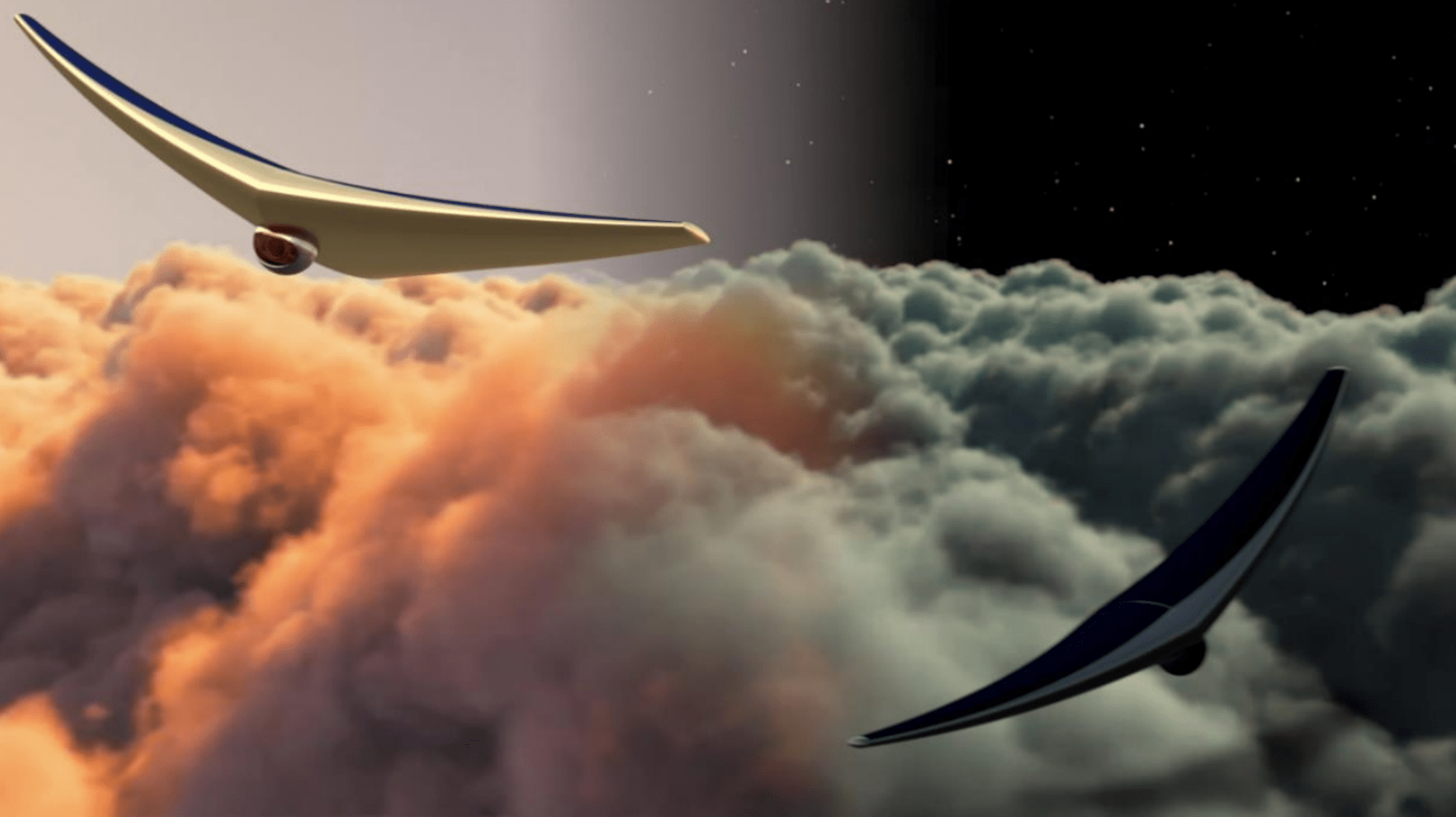Javid Bayandor
State University of New York
The Bioinspired Ray for Extreme Environments and Zonal Exploration (BREEZE) combines inflatable structures with bioinspired propulsion to create a versatile flier for exploration of Venusian atmosphere. BREEZE will navigate the atmosphere at altitudes between 50-60 km, riding zonal winds and overcoming the meridional winds to circumnavigate the planet every 4-6 days. BREEZE’s scientific payload of a nephelometer, anemometer, magnetometer, a mass spectrometer, THEMIS, synthetic aperture RADAR, and visible light camera will enable controllable selection of dispersed or repeated location sample collection for atmospheric and geographic studies. These studies include tracking weather patterns, determining atmospheric constituents, mapping Venusian magnetic field, and creating detailed surface scans. BREEZE will maintain near continuous communication with Earth by relaying information through its orbiting module. The science enabled by BREEZE makes it the ideal approach for the Venus Climate Mission presented in the 2013-2022 Decadal Survey.
To achieve mission objectives, BREEZE transforms aspects of previously proposed Venus fliers and more into a unique concept. Unlike fixed-wing fliers, the inflatable nature of BREEZE enables low-risk traversal and sample collection on the night side of Venus, while also being compactable. BREEZE’s propulsion and buoyancy control via volume reduction provides a 3D navigation capability, unlike balloon concepts whose flight paths are determined by wind direction. The bioinspired propulsion is achieved through oscillatory wing morphing, offering precise control and allowing for multiple flybys over the same location that can facilitate temporal atmospheric sampling. Using wing morphing for propulsion and control, all actuators will be located internally, shielded from the corrosive atmosphere. Inspired by the musculoskeletal system of a manta ray, BREEZE’s morphing wing articulation is distributed across many small electric actuators, effectively reducing the chance of total system failure. The same actuators can be used for active volume reduction that enables buoyancy control with no added mass. To precisely determine attitude and position, BREEZE will use a combination of a star tracker, accelerometer, and gyroscope.
Phase I enabled preliminary computational studies on the structure, aerodynamics, stability, and inflation of BREEZE, elevating the concept from TRL1 to TRL2. Proposed Phase II tasks will advance BREEZE to TRL4 by proving its feasibility and including scaled model and component experiments. The first test would be an assessment of the wing range of motion and flapping velocity using advanced motion capture techniques, including digital image correlation and multi-camera triangulation to capture the 3D location of the entire wing surface. Results from this test will be used to determine the maneuvering capability of BREEZE as a precursor to wind tunnel trials. Physical trials will be conducted to capture aerodynamic forces and moments allowing for calibration and validation of CFD results and substantiating the propulsion and control capabilities of the system. The final test will be assessing BREEZE’s active buoyancy control through volume reduction. This will be done on a scale model of BREEZE that replicates the compression mechanism of the full-scale concept.
Besides Venus, BREEZE can be deployed on other celestial bodies with adequate range of atmospheric densities such as Titan and Earth. This is a major advantage for BREEZE as it can be easily tested in Earth’s atmosphere, lowering associated risks. The control methodologies developed will be applied to ray-inspired airships and robots designed to navigate air as well as liquid environments, respectively. Ultimately, the robustness of the baseline concept and technologies developed will make BREEZE a low-cost/low-risk endeavor that offers to fulfill NASA’s objectives of planetary exploration.

































